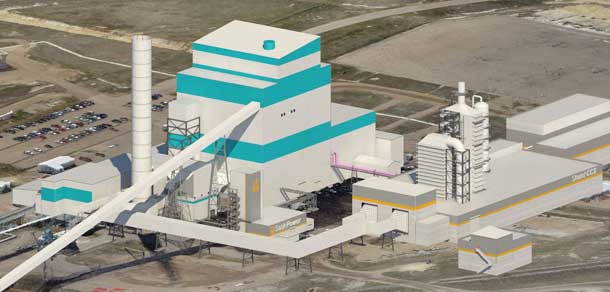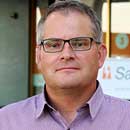APEGS ANNUAL MEETING TRACK SESSIONS
<
In 2002, on the TV drama The West Wing, fictional Democratic President Jeb Bartlet dismissed clean coal as just “… a term pollsters came up with because it polls higher than regular coal.” A decade later, real Democratic President Barak Obama declared that carbon capture and sequestration (CCS) was an important part of America’s energy future. Part of what changed the popular and political attitudes towards clean coal was SaskPower’s world-leading success in building a CCS facility on the coal power plant at Boundary Dam unit 3 (BD3).
Corwyn Bruce, P.Eng. was a SaskPower engineer involved in the development of the CCS facility and is currently on secondment to the International CCS Knowledge Centre. The centre was established with the support of $20 million grant from BHP Billiton to share the knowledge gained from the BD3 Project throughout the world to accelerate the deployment of CCS as a means to significantly reduce carbon dioxide (CO2) emissions.
World Leader
Bruce recalled how SaskPower beat other CCS contenders to commercial operation with the world’s first fully integrated carbon capture plant on a coal fired power plant. He noted that BD3 was nearing the end of its service life but still had much valuable existing infrastructure. In the face of tightening federal regulations on coal, SaskPower was motivated to find a way to preserve those assets. As well, there appeared to be a ready market for CO2 to be used as part of enhanced oil recovery and volatile natural gas prices, at the time, made that power option less attractive.
But a significant incentive, Bruce said, was a $240 million federal grant for the development of clean technology that helped kickstart the initiative.
“The grant was in place in advance of the formal decision-making playing out which allowed SaskPower to make a host of preparations. Saskpower was able, on a preliminary basis, to source suppliers, materials, sub-contractors and the like. So, when the formal decision was made to proceed, the project team was able to start real progress almost immediately. This ‘shovel ready’ status, and the many spin-off benefits associated with the project, led to the project approval.”
Dramatic Benefits
The benefits have been dramatic and have continually improved. The upgrades have expanded the life of the 45 year old power plant by about 30 years. Since it went online in 2014, the BD3 CCS plant has captured 2,600,000 tonnes of CO2 emissions – the equivalent of taking 650,000 cars off the road. Where conventional lignite coal plants put out roughly 1,100 tonnes of emissions per gigawatt hour, BD3 can now put out as little as 140 tonnes. The plant also keeps many other pollutants out of the atmosphere, including blocking 100 per cent of the plant’s sulphur dioxide emissions.
As with all first of a kind projects, many lessons were learned, and a number of these learnings were incorporated into the feasibility study for a potential second generation CCS facility at the Shand Power Station.
“In the event that SaskPower makes a decision to proceed with CCS on Shand, there will be many new advantages. We would be able to assess all the lessons learned from Boundary Dam. We have been able to try out new technology and different suppliers. Shand is a newer power plant so there would be less retrofitting required. The physical layout of the site would require less infrastructure. Altogether, the capital cost per tonne of CO2 at Shand is expected to be 67 per cent less than it was at Boundary Dam,” Bruce said.
Spreading the Good Word
All of this expertise had made the staff and the team that led BD3 highly sought-after as consultants for CCS projects elsewhere, hence the creation of the International CCS Knowledge Centre as a vehicle for SaskPower to share its knowledge.
This includes not only other power plants, such as a facility in Australia that Bruce is helping but also other high-emitting industries such as cement and steel plants. The Knowledge Centre is actively supporting CCS development in Asia, Europe and in other regions of Canada, too.
“I have a really great job. I get to travel all over the world and help people with cool projects,” Bruce said.
Clean Coal is a Reality
According to the International Energy Agency’s coal analysis and forcasts, much of the world still relies on coal, such as China, India and Poland. Like all nations, these countries are looking to find a balance of energy security and meet their commitments to global climate goals. The best part of the job, Bruce says, is the ongoing contributions the Knowledge Centre is making to the future of the planet and sustainable energy production.
With the added efficiencies of second generation, emissions are expected to be cut even further, to less than 140 tonnes per gigawatt hour. Bruce expects this number to go even lower with future improvements, and with the environmental benefits of low emission byproducts.
“Zero emissions coal is possible,” Bruce declared.

